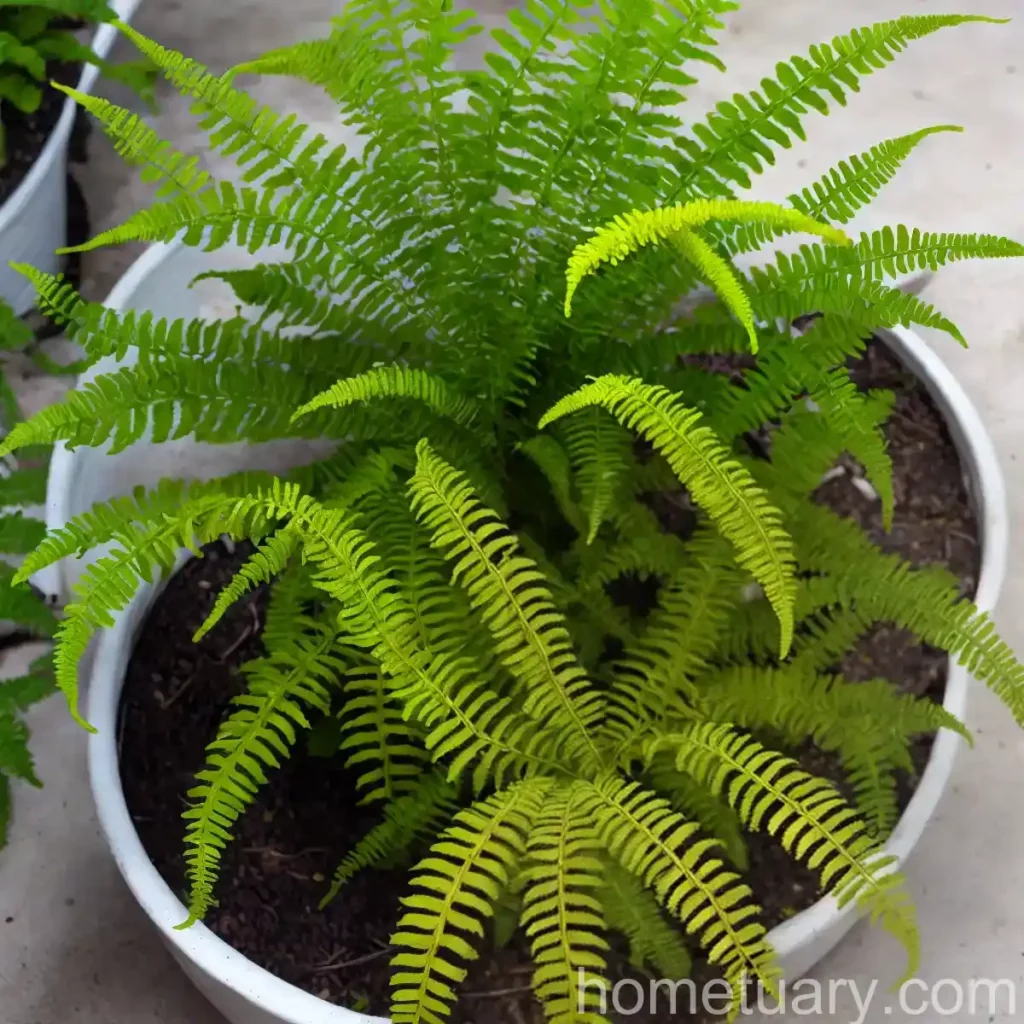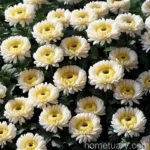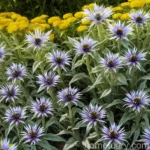The Enchanting Rabbit’s Foot Fern: A Comprehensive Care Guide
The rabbit’s foot fern (Davallia fejeensis) is a fascinating and visually striking plant that has gained popularity among plant enthusiasts for its unique characteristics and relatively low maintenance requirements. In this comprehensive care guide, we will delve into the various aspects of cultivating and caring for the rabbit’s foot fern, including its cultural significance, preferred conditions, uses, propagation techniques, and common diseases and pests. Whether you are a seasoned plant parent or a novice green thumb, this guide will equip you with the knowledge and tips necessary to nurture a thriving rabbit’s foot fern in your indoor or outdoor space.
What is the Rabbit’s Foot Fern (Davallia fejeensis)?
The rabbit’s foot fern, scientifically known as Davallia fejeensis, is an epiphytic species of fern that belongs to the Davalliaceae family. Native to Fiji and other Pacific Islands, this charming fern is renowned for its distinctive rhizomes that resemble the delicate feet of a rabbit, hence its common name. With its lacy, finely-cut fronds and unique furry rhizomes, the rabbit’s foot fern adds an elegant and whimsical touch to any botanical display.
Key Takeaways – Rabbit’s Foot Fern (Davallia fejeensis)
Before we delve into the specific care requirements for the rabbit’s foot fern, let’s briefly highlight the key takeaways that will be covered in detail throughout this guide:
- Culture: Understanding the cultural significance and traditional uses of the rabbit’s foot fern.
- Uses: Exploring the versatile applications of the rabbit’s foot fern in both indoor and outdoor settings.
- Water: Determining the optimal watering schedule and moisture requirements for the fern.
- Sunlight: Identifying the ideal light conditions for growing a healthy and vibrant rabbit’s foot fern.
- Fertilizer: Meeting the nutritional needs of the fern through appropriate fertilization.
- Soil: Selecting the right potting medium for optimal growth and development.
- Pruning: Proper techniques for maintaining the desirable shape and appearance of the fern.
- Propagation: Exploring methods for propagating the rabbit’s foot fern and expanding your plant collection.
- Container: Choosing suitable containers for housing the fern in various environments.
- Popularity: Understanding the widespread appeal of the rabbit’s foot fern among plant enthusiasts.
- Common Diseases: Recognizing potential diseases and implementing effective disease management strategies.
- Common Pests: Identifying common pests that may affect the fern and implementing pest control measures.
- Botanist’s Tips: Expert recommendations and insights for successfully cultivating Davallia fejeensis.
- Fun Facts: Discovering intriguing and lesser-known facts about the rabbit’s foot fern.
Now, let’s embark on a journey to unravel the enchanting world of the rabbit’s foot fern and gain valuable insights into its care and cultivation.
Culture and Traditional Uses
Cultural Significance
In various cultures, the rabbit’s foot fern holds symbolic significance and is often associated with themes of luck, protection, and prosperity. Its unique and aesthetically pleasing appearance has made it a popular choice for ornamental and decorative purposes in homes, offices, and public spaces. The delicate, lacy fronds of the rabbit’s foot fern contribute to its ethereal and enchanting allure, making it a favored choice for botanical enthusiasts seeking to incorporate a touch of natural elegance into their surroundings.
Traditionally, the rabbit’s foot fern has been revered for its association with good fortune and positive energy. In some cultures, it is believed that keeping the fern in the home or workplace can attract auspicious energies and ward off negative influences. This cultural reverence for the rabbit’s foot fern adds an additional layer of allure and mystique to this captivating plant, making it a cherished addition to diverse botanical collections.
Traditional and Modern Uses
Beyond its cultural significance, the rabbit’s foot fern has found diverse applications in both traditional and modern settings. Its ornamental value and low maintenance requirements make it an excellent choice for indoor spaces, where it can thrive in containers, terrariums, and hanging baskets. The distinctively fuzzy rhizomes, reminiscent of rabbit’s feet, lend a whimsical and charming character to the fern, making it a popular choice for interior décor and botanical arrangements.
In recent years, the rabbit’s foot fern has also gained attention for its potential health benefits and air-purifying properties. Like many other fern species, Davallia fejeensis has the capability to effectively remove pollutants and enhance air quality, making it a valuable addition to indoor environments. Its graceful, arching fronds and endearing rhizomes make it a beautiful and functional choice for those seeking to improve the air quality and aesthetic appeal of their living spaces.
With its rich cultural symbolism and versatile uses, the rabbit’s foot fern continues to captivate plant enthusiasts and interior decorators alike, earning its place as a beloved and cherished botanical variety.
Essential Care Guidelines
Now that we have explored the cultural and traditional aspects of the rabbit’s foot fern, it’s time to delve into the essential care guidelines for nurturing and maintaining a healthy specimen of Davallia fejeensis. From its water and sunlight requirements to its fertilizer needs and propagation techniques, we will cover all the crucial aspects of caring for the rabbit’s foot fern in detail.
Water Requirements
Ensuring appropriate moisture levels is essential for the optimal growth and overall health of the rabbit’s foot fern. Understanding the ideal watering schedule and practices is paramount in preventing issues such as root rot or dehydration. Consider the following guidelines when determining the water needs of your Davallia fejeensis:
- Moderate Moisture: Rabbit’s foot ferns thrive in consistently moist conditions. Ensure that the soil or potting medium remains moderately moist, but avoid waterlogging or allowing the plant to sit in standing water.
- Regular Monitoring: Check the moisture level of the soil regularly, especially during warm and dry periods. Adjust your watering frequency based on the specific requirements of your environment and the fern’s growth stage.
- Humidity: In addition to regular watering, providing ample humidity can benefit the rabbit’s foot fern. Mist the fronds and rhizomes with water or incorporate a humidity tray or humidifier to maintain a favorable humidity level, especially in indoor environments with dry air.
Sunlight Requirements
Proper exposure to light is crucial for the rabbit’s foot fern to thrive and develop its characteristic lush foliage. While it does not tolerate direct sunlight, it does require bright, indirect light to flourish. Consider the following tips for meeting the sunlight needs of your Davallia fejeensis:
- Indirect Light: Position the fern in a location that receives bright, indirect light. Avoid exposing it to direct sunlight, as this can scorch the delicate fronds and cause damage to the plant.
- Filtered Light: In indoor settings, consider placing the rabbit’s foot fern near a window with sheer curtains or in an area with dappled light to provide the ideal light conditions for its growth.
Fertilizer Needs
Supplementing the soil with appropriate nutrients through regular fertilization can support the vigorous growth and vitality of the rabbit’s foot fern. Implement the following practices to ensure proper fertilization of your Davallia fejeensis:
- Diluted Fertilizer: Use a balanced, diluted liquid fertilizer at half or quarter strength during the growing season. Apply the fertilizer every four to six weeks to provide the necessary nutrients without risking over-fertilization.
- Avoid Overfeeding: Refrain from over-fertilizing the rabbit’s foot fern, as this can lead to salt buildup in the soil and potential damage to the plant. Follow the recommended dosage and frequency as per the specific fertilizer product.
Soil Requirements
Selecting the right type of potting medium is crucial in creating an environment that promotes healthy growth and development for the rabbit’s foot fern. Consider the following guidelines when preparing the ideal soil or potting mix for Davallia fejeensis:
- Well-Draining Mix: Use a well-draining potting mix that retains moisture while allowing excess water to flow through. A combination of peat moss, perlite, and pine bark can provide the necessary structure and drainage for the fern’s roots.
- Additional Components: Consider adding organic matter or compost to the potting mix to enrich the soil and provide essential nutrients for the fern.
Pruning Techniques
Pruning is an essential aspect of maintaining the aesthetic appeal and health of the rabbit’s foot fern. Promote a neat and attractive appearance while ensuring the vitality of the plant by following these pruning techniques:
- Dead Frond Removal: Regularly remove any yellowing or wilted fronds from the plant to encourage new growth and prevent the spread of diseases.
- Trimming Rhizomes: If the hairy rhizomes of the rabbit’s foot fern become excessively tangled or unruly, consider trimming them lightly to maintain a tidy and well-groomed appearance.
Propagation Methods
Expanding your collection of rabbit’s foot ferns or sharing this enchanting plant with others can be achieved through successful propagation. Explore the following methods for propagating Davallia fejeensis:
- Division: Divide a mature plant into smaller sections, ensuring that each division has healthy fronds and rhizomes. Plant the divisions in separate containers with suitable potting mix to encourage their growth.
- Rhizome Cuttings: Carefully detach healthy rhizome sections from the parent plant and plant them in a new container or potting medium. Maintain adequate moisture and warmth to support the growth of new ferns from the cuttings.
Container Selection
Choosing the right container for your rabbit’s foot fern is essential for ensuring its well-being and allowing for proper growth. Consider the following factors when selecting a container for Davallia fejeensis:
- Drainage Holes: Opt for a container with drainage holes to prevent water from accumulating at the bottom and causing root rot.
- Size: Select a container that provides ample space for the fern’s rhizomes and allows for unrestricted growth of the root system.
Popularity and Appeal
The rabbit’s foot fern has garnered significant popularity among plant enthusiasts and interior decorators due to its captivating aesthetics and relatively low maintenance requirements. Its unique rhizomes and delicate fronds make it a sought-after choice for botanical displays, adding a touch of pizzazz and natural allure to living spaces. This popularity has led to an increased demand for the rabbit’s foot fern, making it a staple in both traditional and contemporary botanical arrangements.
Common Diseases and Disease Management
While the rabbit’s foot fern is generally resilient, it is susceptible to certain diseases that can affect its overall health and vigor. Recognizing common diseases and implementing effective disease management strategies is crucial for preserving the well-being of Davallia fejeensis. Common diseases that may affect the rabbit’s foot fern include:
- Fungal Infections: Excessive moisture or poor air circulation can lead to fungal diseases such as root rot or leaf spot. To prevent fungal infections, ensure proper ventilation, moderate moisture levels, and prompt removal of any affected or decaying foliage.
- Pest Infestations: Pests such as spider mites or aphids may occasionally target the rabbit’s foot fern. Regularly inspect the fronds and undersides of the leaves for signs of pest activity, and implement appropriate pest control measures if an infestation is detected.
Common Pests and Pest Control
In addition to diseases, the rabbit’s foot fern may encounter a variety of pests that can compromise its health and appearance. Implement the following pest control measures to safeguard your Davallia fejeensis from common pests:
- Regular Inspection: Routinely inspect the fern for signs of pest activity, such as stippling on the leaves, webbing, or visible insects. Early detection allows for prompt intervention and prevents pest populations from escalating.
- Horticultural Oils or Insecticidal Soaps: Treat pest infestations with horticultural oils or insecticidal soaps, ensuring thorough coverage of the affected areas. These natural remedies effectively target pests while minimizing harm to the plant.
Botanist’s Tips for Cultivating Davallia fejeensis
To complement the essential care guidelines outlined above, consider the following expert recommendations and insights for successfully cultivating and nurturing your rabbit’s foot fern:
- Optimal Temperature: Maintain a consistently warm temperature range of 60-75°F (15-24°C) to support the growth and vitality of the rabbit’s foot fern.
- Consistent Moisture: Strive to maintain moderate moisture levels and avoid fluctuations in soil moisture, as this can stress the fern and impede its growth.
- Air Circulation: Ensure adequate air circulation around the fronds and rhizomes to prevent the buildup of humidity and reduce the risk of fungal diseases.
- Grooming and Maintenance: Regularly groom and inspect the rabbit’s foot fern for any signs of damage, diseases, or pest activity, addressing any issues promptly to maintain its health and appearance.
Fun Facts about the Rabbit’s Foot Fern
Discover some intriguing and lesser-known facts about the rabbit’s foot fern that add to its allure and appeal:
- Epiphytic Nature: As an epiphytic fern, Davallia fejeensis has the remarkable ability to grow upon other plants or structures, drawing nutrients and moisture from the air and organic matter around it.
- Long Lifespan: With proper care, the rabbit’s foot fern can thrive for many years, rewarding its caretakers with its graceful presence and enduring beauty.
- Rhizome Variability: The rhizomes of Davallia fejeensis can display a range of colors, including brown, green, and white. This variability adds an additional visual interest to the fern, making each plant unique in its own right.
- Air-Purifying Properties: Like many ferns, the rabbit’s foot fern contributes to air purification and can help remove harmful pollutants from indoor environments, promoting healthier air quality.
Links to External Resources
For further insights and information on the rabbit’s foot fern (Davallia fejeensis), explore the following external resources:
- American Fern Society
- Royal Horticultural Society – Ferns
- University of Florida IFAS Extension – Davallia fejeensis
- The New York Botanical Garden – Ferns and Lycophytes
The rabbit’s foot fern (Davallia fejeensis) holds a special place in the hearts of plant aficionados, capturing their attention with its distinctive appearance and enchanting allure. By adhering to the essential care guidelines and insights shared in this comprehensive care guide, you can create an ideal environment for your rabbit’s foot fern to flourish and grace your indoor or outdoor space with its enduring charm.
Incorporate the tips and recommendations provided in this guide to elevate your experience of cultivating the rabbit’s foot fern, and revel in the captivating beauty and resilience of this remarkable botanical treasure. Whether displayed as a standalone specimen or incorporated into imaginative botanical arrangements, Davallia fejeensis is sure to enchant and inspire admiration for its unique attributes and timeless elegance.















